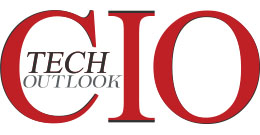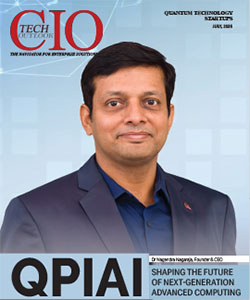Future proofing IoT and Communications Connectivity in India with eSIMs
Sachin Arora, Head of Connectivity & IoT, Giesecke+Devrient (G+D), India
.jpg) Sachin currently leads the Telecom business unit at Giesecke & Devrient India. As Business Head, he oversees the company’s IoT and IIoT initiatives. He is responsible for driving the division's growth, strategy, and executive relationships in India. With over 20 years of industry experience, he continues to contribute through his deep domain expertise.
Sachin currently leads the Telecom business unit at Giesecke & Devrient India. As Business Head, he oversees the company’s IoT and IIoT initiatives. He is responsible for driving the division's growth, strategy, and executive relationships in India. With over 20 years of industry experience, he continues to contribute through his deep domain expertise.
By 2030, India is projected to have over 1.2 billion smartphone connections. According to a report by GSMA, India’s 5G subscriber base will reach 641 million people, while the country’s Internet of Things (IoT) device base is expected to hit 2 billion by 2026 according to Nasscom IoT Centre of Excellence. This remarkable growth is spurred by initiatives like Digital India and Smart Cities Mission which have increased 5G roll outs and IoT deployments across the country.
For decades, SIM cards have been the enablers of mobile connectivity and they continue to play a vital role across various devices and use cases. As form factors evolve, the emergence of the embedded SIM (eSIM) brings with it a range of powerful upgrades. With the ability to be remotely provisioned, enhanced security features, and a digital-first design that aligns with sustainability goals, eSIMs offer a flexible and scalable connectivity solution, especially well-suited to today’s dynamic IoT and mobile ecosystems. In India’s fast-advancing digital landscape, eSIM adoption is becoming a strategic enabler complementing existing technologies while paving the way for more integrated and future-ready connectivity.
In fact, the Indian eSIM market is projected to grow substantially in 2025, reaching USD12.8 billion, according to Research and Markets. Looking ahead, IMARC Group expects continued growth over the next decade, with a compound annual growth rate of 15.83% and hitting USD1,459.82 million by 2033. The group cited the proliferation of smartphones, growing adoption of IoT, and government initiatives as the reason for this boom.
The eSIM is a chip permanently embedded in a device that, when combined with a digital eSIM profile, eliminates the need for a physical SIM card. eSIMs can be managed remotely, allowing operators to deploy over-the-air updates and maintain secure device management. These capabilities also support regulatory compliance. Digital Know-Your-Customer (KYC) processes can be conducted securely across multiple jurisdictions, ensuring reliable and auditable records. A GSMA-compliant eSIM management platform helps organisations standardise and safeguard their operations, enabling smoother compliance with both current and future regulatory requirements.
Reshaping Telecoms and IoT with eSIMs
Apart from the ubiquitous smartphone, we see that more and more devices are being connected. SIM technology continues to play a critical role in the IoT landscape, where secure, reliable connectivity is paramount. As India’s IoT and 5G ecosystems expand, eSIMs are transforming how telecom operators and enterprise sectors manage connectivity across a wide range of devices and use cases. Sectors such as manufacturing, energy, logistics, and smart mobility are set to benefit immensely from rising eSIM adoption. To meet this demand, telecom operators are increasingly embracing GSMA’s latest eSIM standards which are collectively reshaping the eSIM landscape and its application across the IoT value chain.
On the sustainability front, eSIMs are undoubtedly the eco-friendlier option. Compared to eSIMs, traditional SIM cards contribute significantly to plastic waste and shipping emissions. Replacing physical SIMs with eSIMs eliminates this issue while simplifying the logistics of deploying and managing IoT devices across a global network. A digital approach reduces the overall environmental impact while streamlining processes taking the nation forward in its sustainability efforts as well, with 46% reduced CO2 emissions over the entire lifecycle. Sectors from energy to logistics and agritech are already benefitting from eSIM-enabled device which monitors usage, optimises routing, and enables more secure data transmissions.
Hurdles to eSIM Deployment
Of course, the ambitious goal of nationwide eSIM adoption does not come without its challenges. One of the primary hurdles is a fragmented digital ecosystem. With multiple mobile operators and a wide variety of device types in use, managing eSIMs can become complex and inefficient. To address this, unified eSIM management frameworks are essential offering support for all GSMA-compliant Embedded Universal Integrated Circuit Cards (eUICC) and eSIM use cases across different device categories. Such platforms simplify remote provisioning while also enhancing security.
Another significant barrier is the limited awareness among end-users about the benefits of eSIM technology. Bridging this knowledge gap requires proactive education efforts and clear communication around the advantages and conveniences that eSIMs offer.
The Way Forward
As India forges ahead with its digital agenda, eSIMs play a pivotal role in shaping the nation’s future in connectivity. The applications of eSIMs are many across different sectors, and the nation is on track to push digital transformation forward while reaching for its net-zero target.


.jpg)

